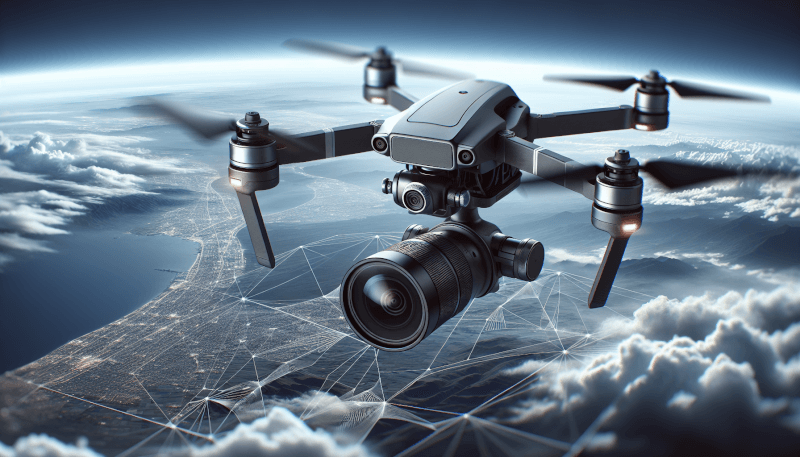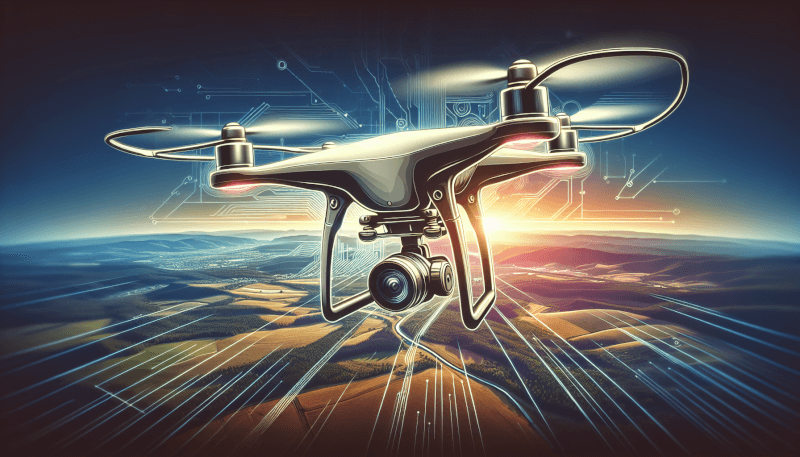If you’re in the market for a drone camera, it’s important to know what key features to consider before making a purchase. With so many options available, finding the right drone camera can be overwhelming. From image quality to flight stability, this article will guide you through the essential features to look for, ensuring you find the perfect drone camera to capture breathtaking aerial shots. So, whether you’re a professional photographer or a hobbyist looking to explore the skies, read on to discover the key features that will elevate your drone photography experience.
Image Quality
Resolution
When it comes to image quality, resolution plays a crucial role. Higher resolution means more details in your photos and videos. Most high-quality drone cameras offer at least 4K resolution, which is four times the resolution of Full HD. This allows you to capture stunningly sharp and clear footage, perfect for professional use or even just sharing your adventures with friends and family.
Sensor Size
Another important factor in image quality is the sensor size. Larger sensors generally perform better in low-light situations and offer more dynamic range. This means better exposure in both bright and dark areas of your footage. So, if you plan on flying your drone in various lighting conditions, look for a camera with a larger sensor size.
Lens Quality
A good lens is vital for capturing clear and crisp images. Look for a drone camera with a high-quality lens made of materials such as glass or polycarbonate. These lenses are more resistant to scratches and can capture sharper images with minimal distortion. Additionally, consider the focal length of the lens. A wider focal length allows for capturing more of the surroundings, while a longer focal length is great for zooming in on distant objects.
Dynamic Range
Dynamic range refers to the camera’s ability to capture details in both the darkest shadows and the brightest highlights of a scene. A wide dynamic range ensures that your footage doesn’t have overexposed or underexposed areas, resulting in a more balanced and visually pleasing image. Look for a drone camera with a high dynamic range to capture stunning shots with better overall exposure.
Stabilization
Gimbal
Camera stabilization is essential for smooth and steady footage. A gimbal is a mechanical device that keeps the camera level and counteracts any unwanted movements caused by drone vibrations or wind. Look for a drone camera with a three-axis gimbal system, which offers the best stability and ensures that your footage stays steady and professional-looking, even in challenging flight conditions.
Electronic Image Stabilization
In addition to a physical gimbal, some drone cameras also offer electronic image stabilization (EIS). EIS uses advanced algorithms to digitally stabilize the footage, reducing the effects of camera shake. While EIS can improve stability, it is not as effective as a physical gimbal. If you prioritize smooth and shake-free footage, a drone with a gimbal is a better option.
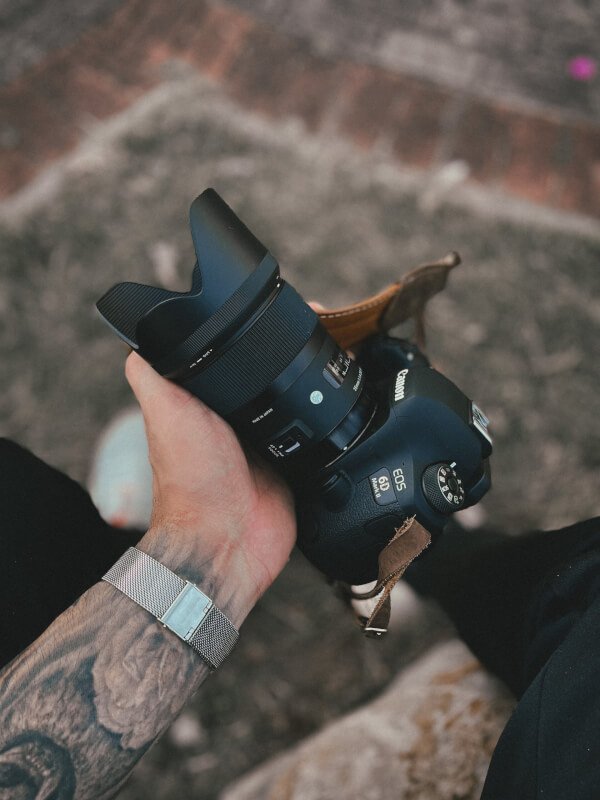
Flight Performance
Flight Time
Flight time refers to how long the drone can stay in the air on a single battery charge. Longer flight times allow for more extended and uninterrupted shooting sessions. Look for a drone camera with a decent flight time of at least 20 minutes or more, depending on your needs. Keep in mind that flight time may be affected by factors such as weather conditions and extra payload, so it’s always a good idea to have spare batteries on hand.
Speed
Drone speed determines how quickly the drone can move through the air. This can be an important factor if you are capturing fast-moving subjects or need to cover a large area quickly. Look for a drone camera with adjustable speed settings, allowing you to choose the right balance between stability and speed for the specific shot you want to capture.
Range
The range of a drone camera refers to the maximum distance it can fly from the controller while maintaining a stable connection. A broader range allows for more exploration and gives you the ability to capture footage from greater distances. Consider the range of the drone camera you are interested in, especially if you plan on using it for aerial photography or videography in large open spaces.
Control
Having precise and responsive control over your drone camera is crucial for capturing the perfect shot. Look for a drone that offers intuitive controls and a reliable remote controller. Some drones also support smartphone integration, allowing you to control the camera and access additional features through an app. Consider the control options that best suit your needs and preferences.
Obstacle Avoidance
Obstacle avoidance technology can greatly enhance the safety and ease of flying your drone. Look for a drone camera that features obstacle sensors or a collision avoidance system. These sensors use different technologies like ultrasonic, infrared, or computer vision to detect potential obstacles in the drone’s path and automatically adjust its course to avoid collisions. This feature is especially useful for beginners or when flying in complex environments.
Camera Mounting and Flexibility
Gimbal Mounting
Drone cameras that come with a detachable gimbal offer more flexibility when it comes to mounting and adjusting the camera. A detachable gimbal allows you to remove the camera for easier transportation or even swap it out for a different camera model. This gives you the freedom to upgrade or experiment with different camera options according to your needs.
Camera Swap/Upgrade
The ability to swap or upgrade your drone camera gives you the opportunity to adapt to changing demands and advancements in technology. Look for a drone camera that offers compatible camera options or upgrade kits. This way, you can easily switch to a better camera without having to buy an entirely new drone. It’s a cost-effective and future-proof option for aerial photographers and videographers.
360-Degree Rotation
360-degree rotation capability allows your drone camera to capture panoramic shots in stunning detail. This feature is especially useful when shooting landscapes or capturing immersive aerial footage. Look for a drone camera that offers 360-degree rotation capability, either through mechanical rotation or digital panning, for more dynamic and breathtaking shots.
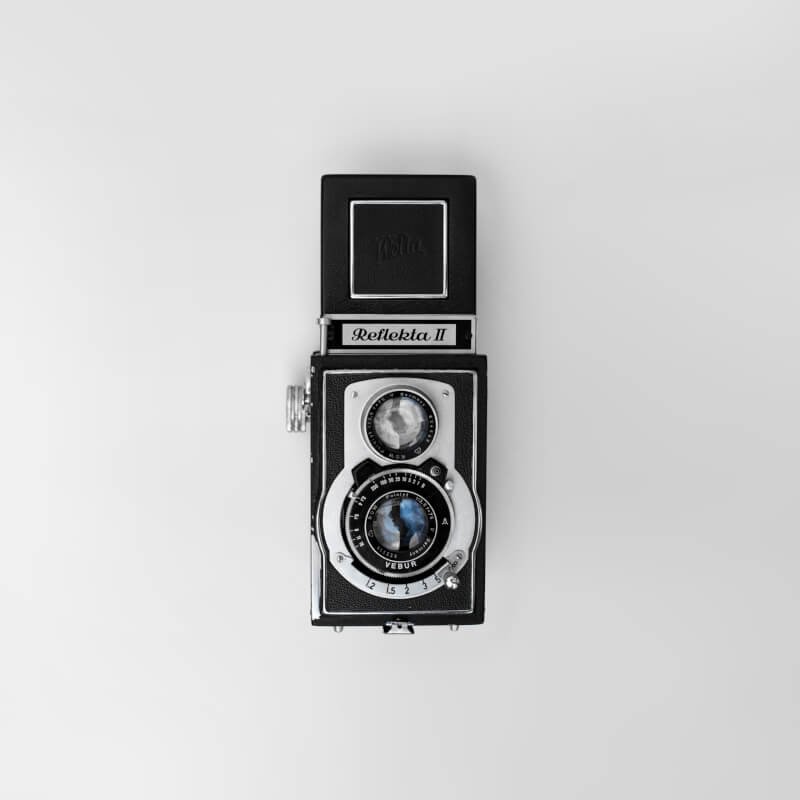
Camera Modes and Settings
Auto Mode
Auto mode simplifies the shooting process by automatically adjusting camera settings to suit different lighting conditions. This is especially useful for beginners who may not be familiar with manual camera settings. Look for a drone camera that offers an auto mode, allowing you to focus on framing your shots while the camera takes care of the technical settings.
Manual Mode
For more experienced photographers and videographers, manual mode provides full control over camera settings such as aperture, shutter speed, and ISO. Manual mode allows you to fine-tune your settings based on the specific shot you want to capture. Look for a drone camera that offers manual mode or a range of adjustable settings, giving you creative control over your aerial photography or videography.
Burst Mode
Burst mode is perfect for capturing fast-moving subjects or sequences of action. This mode allows the drone camera to take a series of rapid shots in quick succession, increasing the chances of capturing the perfect moment. Look for a drone camera that offers burst mode, with adjustable frame rates and the ability to choose the number of shots in each burst.
Time-Lapse
Time-lapse photography is a technique that captures a scene gradually changing over an extended period of time. This creates a captivating and accelerated visual effect. Look for a drone camera that offers time-lapse mode, allowing you to specify the intervals between shots and the duration of the time-lapse sequence. This feature is particularly useful for capturing unique perspectives of landscapes, construction projects, or natural phenomena.
Slow Motion
Slow-motion capability allows you to capture dramatic and cinematic footage by slowing down the motion in your videos. Look for a drone camera that offers high frame rate recording, allowing you to capture slow-motion footage with smooth playback. This feature is ideal for capturing action sequences, sports events, or any fast-paced subject that you want to see in exquisite detail.
RAW Capability
RAW capability is essential for professional photographers and advanced enthusiasts who want to have full control over post-processing their images. RAW files contain unprocessed data captured by the camera’s sensor, providing more flexibility for adjustments such as exposure, white balance, and color grading. Look for a drone camera that offers RAW capability, giving you the highest level of image quality and creative freedom.
Battery Life
Flight Time
As mentioned earlier, flight time refers to how long the drone can remain airborne on a single battery charge. Longer flight times are preferable, especially if you have a lot of ground to cover or want to capture extensive footage. Look for a drone camera with a decent flight time that meets your needs. Be aware that flight time may vary depending on various factors such as weather conditions and flight style, so it’s always wise to carry extra batteries for extended shooting sessions.
Charging Time
Charging time is an essential factor to consider, especially when planning multiple flight sessions or when you’re in a rush. Look for a drone camera with a reasonable charging time, ideally with the availability of fast-charging options. Some drones offer quick charge capabilities that significantly reduce the time needed to fully charge the battery, allowing you to get back in the air faster.
Battery Swapping
Being able to swap batteries quickly can greatly extend your flight sessions and reduce downtime. Look for a drone camera with easily removable and interchangeable batteries. This will enable you to swap out depleted batteries for fully charged ones, allowing you to continue flying and capturing footage without interruption. Additionally, having spare batteries on hand provides added convenience and flexibility.

Transmission System
Live Video Streaming
Live video streaming capability is a fantastic feature for drone cameras, as it allows you to view the footage in real-time on a compatible device. Look for a drone camera that supports live video streaming to a smartphone or tablet to have a better idea of what the camera is capturing while in flight. This enhances your ability to frame shots and make adjustments on the fly, resulting in more precise and dynamic aerial footage.
Transmission Range
Transmission range refers to the maximum distance between the drone camera and the controller while maintaining a stable and reliable connection. A longer transmission range allows for more versatility and gives you the freedom to explore and capture shots from greater distances. Consider the transmission range of the drone camera you are interested in, especially if you plan on using it for aerial photography or videography in vast open spaces.
Frequency
The frequency at which the drone camera operates is an essential consideration when it comes to transmission. Look for a drone camera that operates on a stable and reliable frequency. Common frequencies used for transmission are 2.4GHz and 5.8GHz. Higher frequency options offer better signal penetration and are less susceptible to interference, especially in crowded Wi-Fi environments. Always choose a drone camera with a reliable frequency for uninterrupted and smooth transmission.
Interference Resistance
Interference from other electronic devices or nearby Wi-Fi networks can disrupt the transmission signal and affect the quality of your footage. Look for a drone camera that features interference resistance technology such as frequency hopping or signal encryption. These technologies help minimize the effects of interference, ensuring a stable and uninterrupted connection between the drone camera and the controller.
Latency
Latency refers to the delay between the drone camera capturing the footage and it appearing on the controller’s screen. Low latency is crucial for a smooth flying and filming experience, as it allows you to react quickly to changes in your surroundings. Look for a drone camera with low latency transmission, ensuring near real-time feedback and precise control over your aerial photography or videography.
Intelligent Features
Follow Me Mode
Follow Me mode is a fantastic feature that allows the drone camera to automatically track and follow a moving subject. This is particularly useful for capturing action shots or dynamic footage of yourself or others. Look for a drone camera that offers a reliable and accurate Follow Me mode, ensuring that the camera stays focused on the subject even as they move.
Waypoints
Waypoints mode allows you to pre-program a flight path for your drone camera, guiding it through a series of predefined points. This is great for capturing aerial footage of specific locations or creating seamless video transitions. Look for a drone camera that offers easy-to-use waypoint navigation and the ability to adjust speed and altitude at each waypoint.
Auto Return
Auto Return is a safety feature that allows the drone camera to automatically return to its takeoff point or a designated home location. This feature is especially useful if the drone loses connection, has low battery, or encounters any other issue during flight. Look for a drone camera that offers a reliable Auto Return function, giving you peace of mind knowing that your drone will safely return home.
Intelligent Flight Modes
Advanced drones often come with a variety of intelligent flight modes that automate specific flight patterns or movements. These flight modes can add creativity and cinematic flair to your aerial photography or videography. Look for a drone camera that offers intelligent flight modes such as Orbit Mode (circles around a subject), Dronie Mode (flies backward while zooming out), or ActiveTrack (tracks and follows a subject while avoiding obstacles). These features can help you capture impressive and professional-looking shots with ease.
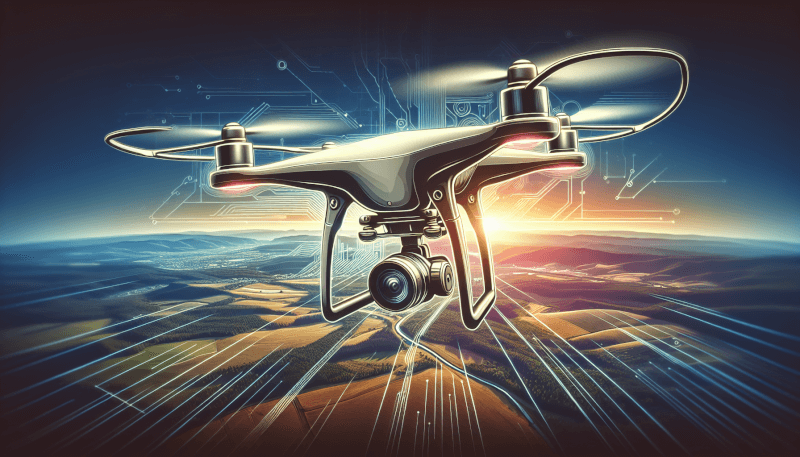
Build Quality and Durability
Materials
The materials used in the construction of a drone camera play a key role in its overall build quality and durability. Look for a drone camera that is made from high-quality materials such as carbon fiber, magnesium alloy, or durable plastics. These materials provide strength and resilience, ensuring that your drone camera can withstand the rigors of outdoor flying and withstand accidental bumps or crashes.
Water and Dust Resistance
Outdoor shooting often exposes your drone camera to various weather elements and environmental conditions. Look for a drone camera that offers some level of water and dust resistance. While not all drones are fully waterproof, having some degree of protection against water or dust can help prevent damage and ensure the longevity of your equipment. It’s essential to follow the manufacturer’s guidelines and avoid flying your drone in extreme weather conditions.
Protection against Impact
Accidents do happen, and collisions can occur during flight, especially when flying in tight spaces or around obstacles. Look for a drone camera that offers built-in protection against impact, such as propeller guards or a sturdy frame design. These features help minimize damage in the event of a collision and ensure that your drone camera remains operational for longer.
Price Range
Budget Options
If you’re just starting with drone photography or have a limited budget, there are several budget-friendly drone cameras available that still offer decent image quality and performance. Look for entry-level drones with basic camera capabilities, stable flight performance, and user-friendly features. These budget options allow you to dip your toes into aerial photography without breaking the bank.
Mid-Range
Mid-range drone cameras offer a balance between price and performance. They typically offer higher image quality, longer flight times, and more advanced features compared to budget options. Look for mid-range drones with improved camera sensors, better stabilization systems, longer transmission ranges, and additional intelligent features. These drones are perfect for enthusiasts or professionals looking for reliable and capable equipment at a more affordable price point.
Professional Grade
Professional-grade drone cameras are designed with advanced technologies and capabilities to meet the demands of experienced photographers and videographers. They offer top-notch image quality, longer flight times, extensive transmission ranges, and a wide range of intelligent features. Professional-grade drones often come with interchangeable lenses, high-resolution sensors, and exceptional build quality. These drones are ideal for those who require the highest level of performance and want to push the boundaries of aerial photography and videography.
In conclusion, when looking for a drone camera, consider the key features mentioned above to ensure you have the best tools to capture stunning aerial footage. Image quality, stabilization, flight performance, camera mounting flexibility, camera modes and settings, battery life, transmission system, intelligent features, build quality and durability, and price range are all essential factors to consider. Whether you are a beginner, enthusiast, or professional, there is a drone camera out there to suit your needs and elevate your aerial photography or videography to new heights. So get ready to take to the skies and capture breathtaking shots from a whole new perspective!
